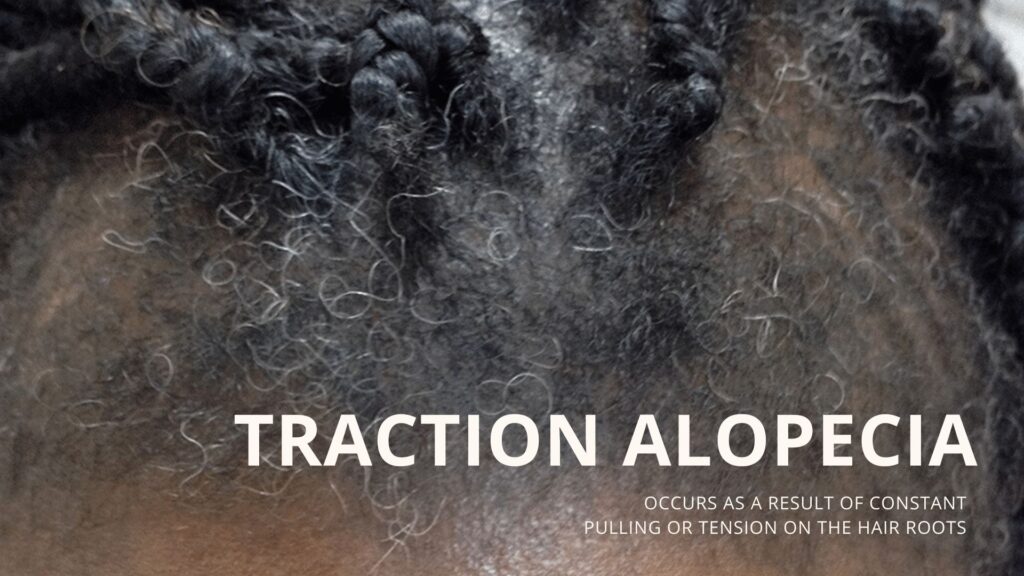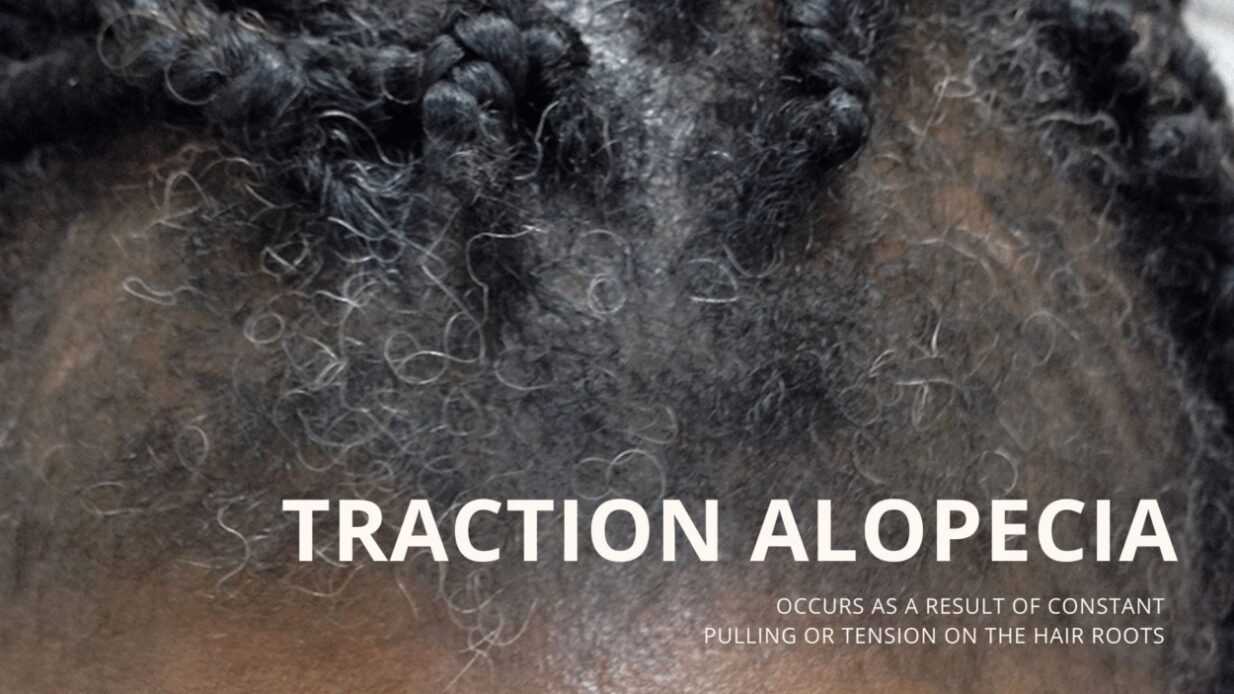Traction alopecia is a type of hair loss that occurs as a result of constant pulling or tension on the hair roots, commonly seen in incorrectly applied Hair Extensions or over use of Hair Extensions or braiding. This pulling can be caused by a variety of factors, including tight hairstyles, hair extensions, and hairpieces.
One of the most common causes of traction alopecia is the use of tight hairstyles, such as braids, cornrows, and ponytails. These styles put a lot of pressure on the hair roots, which can lead to hair loss if left in place for long periods of time.
Another common cause of traction alopecia is the use of hair extensions and hairpieces. These items are often attached to the hair with glue, clips, or other methods that put a lot of tension on the hair roots. This tension can lead to hair loss if the extensions or hairpieces are not removed or adjusted regularly.
Traction alopecia is more common in women, especially women of African descent, but it can also affect men. Some of the signs of traction alopecia include thinning hair, bald spots, and patchy hair loss.
The good news is that traction alopecia is usually reversible if it is caught early. If you suspect that you have traction alopecia, it is important to see a dermatologist or a hair specialist. They will be able to diagnose the condition and recommend a treatment plan.
Treatment may include changing hairstyles, avoiding tight hairstyles and hair extensions, and using scalp-nourishing products. In some cases, medication may also be prescribed to help promote hair growth.
In summary, traction alopecia is a type of hair loss caused by constant pulling or tension on the hair roots. It is often caused by tight hairstyles and hair extensions, but it can also be caused by other factors. If you suspect that you have traction alopecia, it is important to see a dermatologist or hair specialist for proper diagnosis and treatment.
Traction alopecia and Hair Extensions
Traction alopecia is a type of hair loss that can occur as a result of constant pulling or tension on the hair roots. One of the common causes of this condition is the use of hair extensions. Hair extensions are often attached to the hair with glue, clips, or other methods that put a lot of tension on the hair roots. This tension can lead to hair loss if the extensions are not removed or adjusted regularly. The hair around the hairline, temples, and nape area are the most affected by this condition. It’s important to note that if you have hair extensions or plan to have them, to be mindful of the tension they put on your hair, and to seek out a stylist that has experience with hair extensions and hair health.


